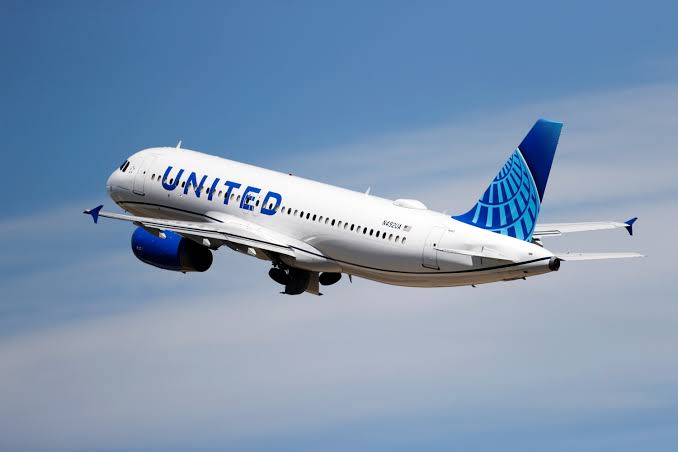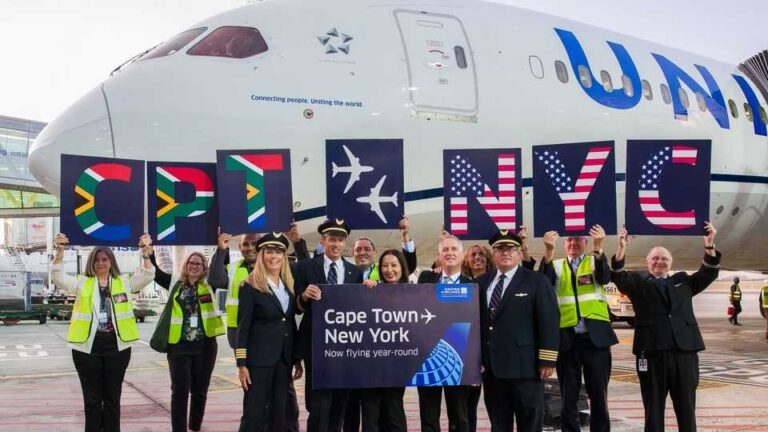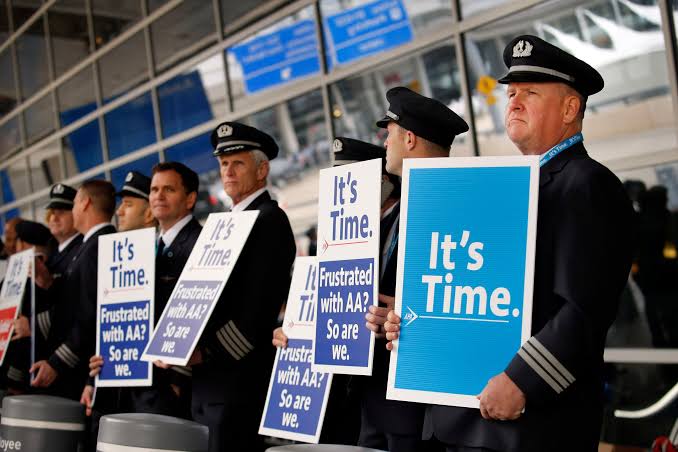In 1 Astonishing Sentence, American Airlines Former CEO Reveals Whether He Thinks Customer Service Is the Priority (Clue: Not Really)
This is a curious attitude toward customers, one that the airline’s own staff worry about.
Not so much that I lose sleep, you understand, but I’m concerned about the airline’s level of happiness.
And, by extension, American Airlines customers’ level of happiness.
Consistently, the airline has become a symbol of too many things that are wrong with air travel.
It’s managed to put itself in a We Don’t Really Care About Passengers corner.
It seems to find it hard to emerge from that.Why, American Airlines’ pleasingly forthright CEO Doug Parker recently managed to offer another statement of the airline’s priorities and how it sees passengers.
In a conversation with employees reported by View From The Wing’s Gary Leff, an American pilot told Parker that there seems to be a reluctance to offer customer service to passengers, even when the flight won’t be leaving on time.
He told the story of a connecting customer who said they’d left their phone and laptop on a flight and no American employee wanted to help.
They’re all told, you see, that the priority is the so-called D0, the determination to push back on time to the detriment, some might say, of customer service.
You know, those little things like the pre-flight drinks the more exalted customers adore.
Parker offered these extremely honest and revealing words: But isn’t pushing back on time just one aspect of a greater good? That the customer should feel good on your airline and want to come back.This, it strikes me, has been American’s singular difficulty of late.
When I flew on the airline last year, in First Class, I encountered a harassed and disinterested Flight Attendant.
I can’t remember whether the flight pushed back on time. I do remember, however, her strained and abject attempts to provide the minimum customer service she could.
The consequence, for me at least, has been to avoid American and choose other airlines.
Am I alone in reacting this way?
I used to fly American a lot. I used to actively choose it because it flew bigger planes from San Francisco to New York and seemed a good enough airline.
the system rolls along nicely and there are no unexpected costs.
Which reminds me of a T-shirt I used to wear, a long time ago. On it, a woman looks up at her lover and explains: “There’s more to life than snogging, Barry.”
American Airlines has been grappling with a critical issue that extends far beyond mere punctuality: the perception of customer satisfaction and the airline’s overall attitude towards its passengers. This challenge has not only affected customer experiences but has also become a point of concern for the airline’s own staff.
One might not lose sleep over this issue, but it’s troubling to think about the airline’s level of happiness and, by extension, the happiness of American Airlines’ customers. Increasingly, American Airlines has become emblematic of many of the problems that plague modern air travel. The company seems to have pigeonholed itself into a corner where passenger satisfaction is not a priority, making it difficult to extricate itself from this negative perception.
Recently, Doug Parker, American Airlines’ forthright CEO, made a revealing statement about the airline’s priorities and how it views its passengers. During a conversation with employees reported by Gary Leff from View From The Wing, an American Airlines pilot shared a concerning observation. He noted a reluctance among the staff to provide customer service to passengers, even when flights were delayed. He recounted an incident involving a connecting passenger who had left their phone and laptop on a flight, only to find that no American Airlines employee was willing to help. The reason, it appears, is the airline’s stringent adherence to the D0 policy—pushing back on time at all costs, even at the expense of customer service.
This policy has led to the neglect of the “little things” that make a significant difference to passengers, such as pre-flight drinks for premium customers. In response to these concerns, Parker admitted, “But isn’t pushing back on time just one aspect of a greater good? That the customer should feel good on your airline and want to come back.” This statement underscores the airline’s fundamental difficulty in balancing operational efficiency with customer satisfaction.
Personal experiences with American Airlines further highlight this issue. When flying First Class last year, the experience was far from satisfactory. The flight attendant appeared harassed and disinterested, providing only the bare minimum of customer service. The flight’s punctuality became irrelevant compared to the strained and lackluster service provided. This experience led to a personal decision to avoid American Airlines and choose other carriers instead.
The dissatisfaction with American Airlines is not an isolated sentiment. Many former loyal customers have turned to other airlines due to repeated negative experiences. Previously, American Airlines was a preferred choice for many, particularly for routes like San Francisco to New York, where they operated larger aircraft and offered a seemingly better service. However, this once favorable perception has significantly deteriorated over time.
The overarching problem lies in the airline’s system, which prioritizes punctuality and cost-efficiency over genuine customer care. This reminds me of an old T-shirt I used to wear, which depicted a woman looking up at her lover and saying, “There’s more to life than snogging, Barry.” Similarly, there’s more to running an airline than just adhering to schedules and minimizing costs. The essence of air travel lies in providing a pleasant and satisfying experience for passengers, which American Airlines seems to have forgotten.
In an industry where customer loyalty is paramount, neglecting passenger satisfaction can have severe repercussions. Airlines like American must recognize that punctuality is just one aspect of the travel experience. A holistic approach that includes attentive customer service, comfortable amenities, and a genuine concern for passenger well-being is crucial.
Furthermore, the internal culture at American Airlines needs a significant overhaul. Employees should be empowered and encouraged to prioritize customer service, even when it conflicts with rigid operational policies. The incident of the passenger who lost their belongings highlights a deeper issue within the company—a lack of flexibility and empathy towards customer needs.
A potential solution could involve revisiting and revising the D0 policy. While operational efficiency is important, it should not come at the expense of customer satisfaction. Implementing a more balanced approach that allows staff to address passenger concerns without fearing repercussions could significantly improve the overall travel experience.
Additionally, American Airlines could benefit from investing in customer service training for their employees. Ensuring that staff are well-equipped to handle various passenger needs with empathy and efficiency would go a long way in restoring the airline’s reputation. Encouraging a culture of proactive service, where employees feel valued and motivated to go above and beyond for passengers, is essential.
Another critical aspect is communication. Transparent and honest communication with passengers about delays, issues, and efforts to resolve them can help build trust. Passengers appreciate being informed and knowing that their concerns are being taken seriously.
Moreover, American Airlines should consider enhancing the in-flight experience, especially for premium passengers. Small gestures, like offering pre-flight drinks, attentive service, and personalized touches, can make a significant difference. These efforts can help rebuild the airline’s image as one that genuinely cares about its passengers.
Ultimately, the goal should be to create an environment where passengers feel valued and cared for, leading to repeat business and positive word-of-mouth. This requires a shift in mindset from viewing passengers as mere numbers to be managed, to seeing them as individuals whose satisfaction is paramount.
American Airlines faces a substantial challenge in addressing its current reputation and improving customer satisfaction. By balancing operational efficiency with a renewed focus on customer service, empowering employees, and enhancing the overall travel experience, the airline can work towards reclaiming its status as a preferred choice for travelers. Remembering that there’s more to air travel than just punctuality and cost-efficiency is key to creating a positive and memorable experience for passengers.






